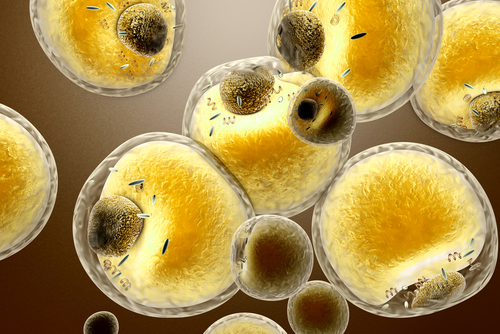A new method that measures the amounts of drugs and lipids in individual cells could help health professionals target more effective treatments for diseases such as tuberculosis (TB).
Researchers from the University of Surrey in the U.K. were able to isolate individual living cells that contained drugs commonly used to treat tuberculosis and found that each cell absorbed the drug differently. In effect, it means each cell has a unique lipid “fingerprint.”
The research was published in the journal Analyst.
Holly-May Lewis, first author of the study from the University of Surrey, said: “There was a big variation in how much drug was found in each cell – this indicates that different cells absorb drugs differently. This could prove significant to improving our understanding of life-saving treatments – not only for TB but for other infectious diseases and cancer too.”
In the study, the Surrey researchers demonstrated the use of a technique called nanocapillary sampling, where scientists use a microscopic tool to trap individual cells.
The analysis was carried out using standard flow liquid chromatography coupled with mass spectrometry instrumentation. The method was applied to 30 living cells, revealing cell-to-cell heterogeneity in the uptake of different drug molecules.
Melanie Bailey, corresponding author of the study from the University of Surrey, said: “Surrey is one of the few places in the country where it’s possible to experiment with these cutting-edge measuring techniques. We recently secured funding to establish a national research facility that will help researchers from the U.K. to make single cell measurements. If we are ever able to develop effective therapeutic methods to treat devastating diseases or fight the pandemics of the future, more out-of-box scientific thinking like this is needed.”
Last year, a collaboration called The Project to Accelerate New Treatments for Tuberculosis (PAN-TB) was announced.
A joint development agreement was signed to support the progression of two investigational tuberculosis (TB) combination treatment regimens into phase 2 clinical development.
The collaboration is made up of organizations contributing five antimicrobial agents.
Partnering 2030: The Biotech Perspective 2023






